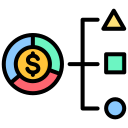Balancing Income and Expenses with Flexibility
Theme selected: Balancing Income and Expenses with Flexibility. Welcome to your adaptable, judgment-free home base for money decisions that bend without breaking. Explore stories, strategies, and tools that help your budget flex with real life—then subscribe and join the conversation.
The Mindset of Flexible Balance
Start by defining a baseline for essentials that covers housing, food, utilities, and non-negotiables, then allow ranges for everything else. A baseline anchors you; flexibility frees you. Share your baseline ideas and subscribe for templates.


The Mindset of Flexible Balance
Map predictable peaks and valleys: heating bills in winter, school breaks, professional conferences, and slower client cycles. Planning for seasonality reduces stress. Tell us which month challenges you most, and we’ll feature reader solutions next week.
Elastic Categories, Not Rigid Lines
Give categories a range: groceries might be 300–380, transport 90–140, fun 40–120. A range honors reality without losing control. What category needs the most elasticity for you this month?
Rolling Envelopes and Sinking Funds
Let envelopes roll forward, especially for irregular costs like car maintenance, dental visits, or gear upgrades. Sinking funds act like shock absorbers. Share your top three sinking funds and why they matter.
Zero-Based With Breathing Room
Allocate every dollar a job, then explicitly fund a Flex category for surprises. Adjust weekly, not daily, to avoid micro-stress. Want our one-page guide? Subscribe and we’ll email it to you.
Variable Income, Steady Life
Create a Salary Floor
Pay yourself a consistent amount from a holding account, even when invoices arrive irregularly. Overflow builds during strong months and covers lean ones. Comment if you want a walkthrough of our holding-account setup.
Use Percentages to Stay Fair in Lean and Lush Months
Assign percentages to taxes, essentials, savings, investments, and fun. When income rises or dips, your plan scales automatically. Which percentages work for your reality right now? Share and compare.
Map a Cash-Flow Calendar
List expected inflows by date, pair them with bill due dates, and reschedule where possible. Visual timelines prevent overdrafts and panic. Post your favorite calendar tool—we’ll compile a reader-tested toolbox.
Make Expenses Work for You
Sort Costs by Flexibility
Rank expenses as must-have, adjustable, or optional. Then assign ranges and rules for when to expand or contract. Which optional expense surprised you by becoming truly nonessential?

Safety Nets That Empower Growth
Tiered Emergency Fund
Start with one month of bare-bones expenses, then grow to three and beyond. Keep the first tier ultra-liquid for speed. What’s your target number, and how will you reach it?
Opportunity Fund for Upside
Separate a small fund for courses, tools, or travel that could increase income. It turns flexibility into momentum. Comment with one opportunity you’ll seed in the next quarter.
Flexible Debt Strategy
Make minimums non-negotiable and vary extra payments by month. In strong months, accelerate; in tighter ones, protect liquidity. Share whether snowball or avalanche fits your psychology best.



